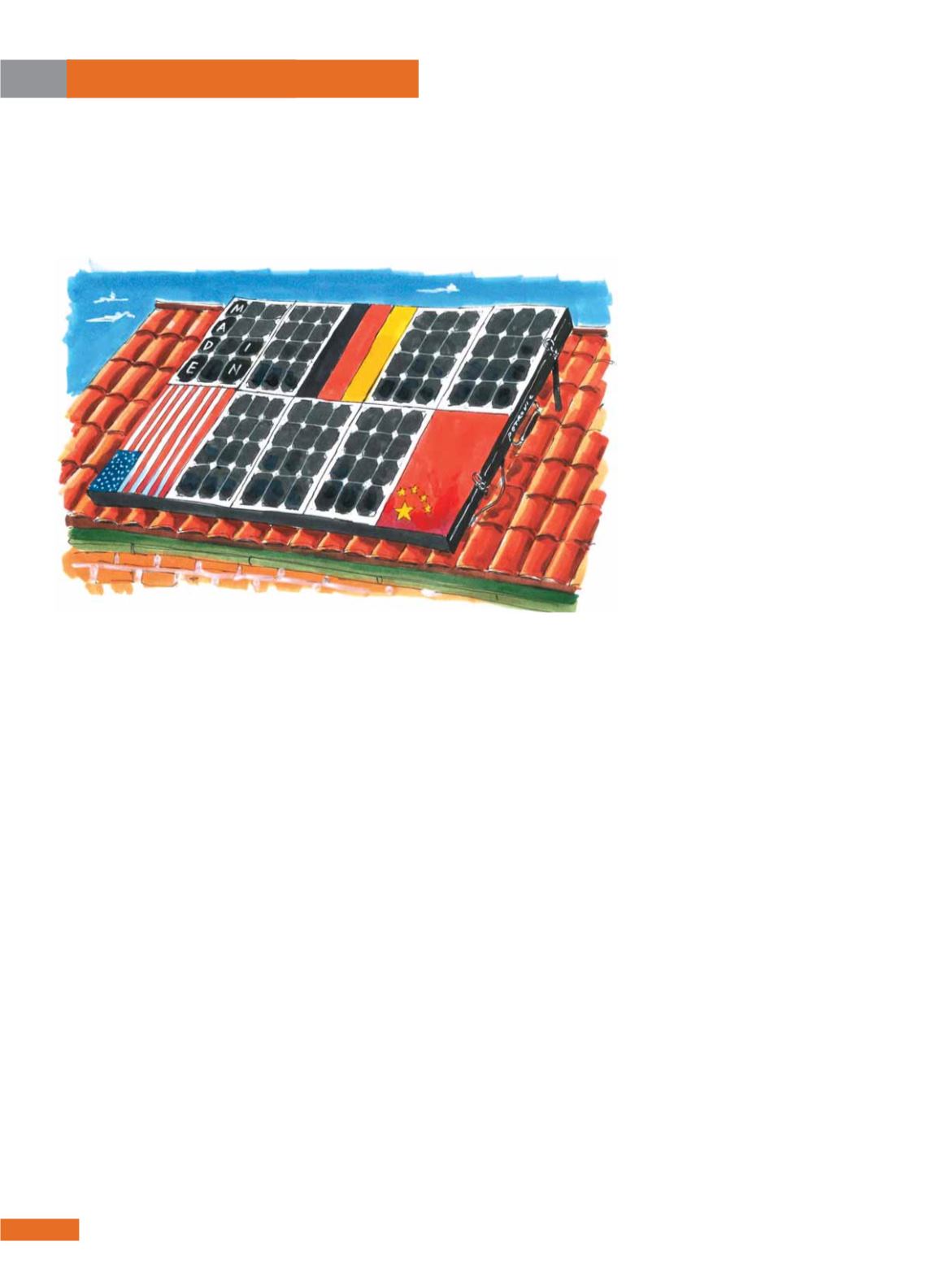

5 2
E L E CT R I C AL CONNE CT I ON
AUTUMN 2 01 5
SOLAR PANEL TECHNOLOGY
It’s not where but how that matters
T
here has been a lot of talk recently
about Chinese made solar panels
being inferior to those made
elsewhere. Is there any truth to this?
Solar panels are manufactured in
North America, China and Europe –
mainly Germany.
Prices have been tumbling, and solar energy
conversion efficiencies have been increasing.
But solar panel selection should not
only dictated by price or technology alone,
as much depends on external factors.
Weather patterns, temperature and siting,
to name a few, make the biggest differences
in energy generation.
The three main production centres provide
good quality panels. Technology developed
in Germany and elsewhere is used in Chinese
factories run in partnership with local
investors. So there is no primary reason to go
for a German panel rather than a Chinese one
on the basis of where they are made.
Cutting-edge solar cell development can be
found in several countries, including Australia.
(In our case it is lamentable that university
research results drift off to other countries.)
Installers of solar cannot be expected to
pay attention to laboratory developments.
Price, performance and durability – in that
order – are their main concerns.
Polycrystalline and crystalline silicon are
the commercially available panel types,
then there are compound semiconductor
materials such as CIGS, CdTe and CdS. Chinese
panels are mainly based on silicon. The CIGS
panel types manufactured in Europe and
the United States have recently started to be
made in China.
A large part of the academic research goes
into basic science, mainly quantum efficiency
and energy efficiency. There is a theoretical
upper limit of 35% for solar cell efficiency
(energy out over energy in). This is the
Shockley Queisser limit, abbreviated as SQ.
In practice nothing gets close, although
by stacking one PV junction on top of
another, placing them in series, efficiency
can be greatly improved. Tandem cell
technology is expensive but becomes
economically viable when used in
conjunction with solar concentrators.
Bifacial solar is an older idea going through
a renaissance with European and Chinese
manufacturers. Both sides of the panel are
employed to convert solar radiation. Vertically
mounted panels use this concept, but there
are weight disadvantages because of the
protective glass on both sides.
Applications for bifacial cells include
balconies, bus shelters, porch coverings,
canopies, carports, facades, and fences.
In practice, energy conversion percentages
vary from the low teens to the low twenties.
For silicon, crystalline efficiency is better
than for polycrystalline or amorphous silicon
(the latter is used in thin panels, and is not
as temperature sensitive – not much used
in Australia).
The temperature de-rating factor can be
a severe limitation on solar panels. When
sunshine is greatest so is the temperature, and
the result is often a net reduction in output.
Ambient temperature is no indication, as
solar panels are light absorbent (also longer
wavelength absorbent) and will experience
much higher temperatures. For example, at
25°C, panel temperature might well be 50°C.
A drop in output of 10% or more can occur
just because of heat.
Surface treatment is important because
pure silicon is shiny and can reflect up to
35% of the sunlight. To reduce the amount
of sunlight lost, an anti-reflective coating
is applied to the silicon wafer. The most
commonly used coatings are titanium
dioxide and silicon oxide.
Thin panel technology is becomingmore
Solar panels from China are
not necessarily inferior, as
they often use Western
technology under licence.
Phil Kreveld
draws attention
to other important quality and
performance factors.
















